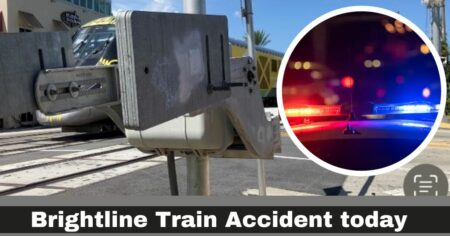The celebration is over, which is a big concern for cryptocurrency. Despite a round of advertising during the Super Bowl in February reaching every customer in the US, fresh funds from gullible retail shoppers aren’t coming in anymore following the crashes in May and June. The holders are unable to pay out without those new dollars.
The “market cap”—their estimated mark-to-market value—of the vast amounts of assets held by cryptocurrency trading organisations is rumoured to be one trillion dollars. But because there aren’t enough actual cash, this figure is absurd. It is known to everyone in the system. Now what?
You can also check
- Trump-Connected SPAC Does Have Enough Votes To Stop A Merger, So The Shareholders Meeting Is Put Off Until October
- New Doctor Who Production Company Name Hints at Shared Universe Spinoffs
The authorised US exchanges are merely the cashier’s counter for the larger crypto casino. On the unregulated offshore exchanges, the real trading action and price discovery take place. These include Huobi, OKX, and Binance. Up until Tuesday, Nov. 8, they also included Sam Bankman-FTX, Fried’s which stopped allowing customer withdrawals at 11:37 a.m.
UTC and later admitted to having a “liquidity crisis” at 4 p.m. UTC. The collapse of Celsius Network, Voyager Digital, and numerous other cryptocurrency trading companies preceded the collapse of FTX and is now gradually bringing the price and trading volume of cryptocurrencies to zero, where they belong. This collapse was started by Terraform Labs’ UST stablecoin.
At the time of publication, FTX had been thrown into liquidation by its Bahamian regulator, was declaring bankruptcy in the US, and Bankman-Fried had resigned as CEO. FTX had been unsuccessfully trying to raise further money. However, FTX’s demise has been particularly noteworthy in part due to its founder’s extraordinarily high praise.
Sam Bankman-Fried, also known as SBF, was born in 1992 to Stanford University professors Sam’s parents. The “longtermist” William MacAskill introduced him to the “effective altruism” quantified charity movement after he graduated from the Massachusetts Institute of Technology with a degree in physics.
He then accepted a job at the quantitative trading firm Jane Street in 2014 with the intention of “earning to give,” a catchphrase among effective altruists who think that the most effective way to do good is to make a lot of money first—even in ethically questionable ways—in order to give it
During the 2017 bitcoin bubble, Bankman-Fried founded his own cryptocurrency hedge fund, Alameda Research, after spending three years at Jane Street. He has claimed that an arbitrage opportunity provided him with the funds necessary to launch FTX. In 2018, everyone could see that the price of bitcoin was higher in Japan than it was in the US, but only Alameda was in a position to take advantage of it.
In May 2019, FTX was established. There, Alameda could trade and acted as the market maker for the exchange. This would not be permitted in most regulated markets due to the clear conflicts of interest and incentives to trade against your own consumers, but offshore cryptocurrency is uncontrolled.
With complex products like perpetual futures, tokenized stock market shares, and options trading, FTX quickly gained popularity. It was ideally positioned for the 2021 crypto bubble, when bitcoin skyrocketed to $69,000, trade volumes increased, and regular people all over the world were hard-sold on investing in just a little cryptocurrency. Although FTX does not permit U.S. users, a different exchange called FTX US was launched in May 2020.
Bankman-Fried began presenting himself as a multibillionaire public intellectual with bold ideas and purposeful mystique during the 2021 cryptocurrency bubble. He posed for the Fortune and Forbes front covers. He was always shown in pictures wearing shorts, a T-shirt, and loose-laced shoes.
I think it’s vital for people to think I seem crazy, he reportedly stated. This convinced venture capitalists like Sequoia Capital to invest in him, with one of its writers writing on the company’s website that “SBF is obviously a genius, so I should just assume that, compared with me, SBF will always be playing at level N+1.”
When Bankman-Fried was dozing off in the office beanbag, important visitors would be expected. Even if the charities’ objectives occasionally sounded unusual, such as reducing the risks posed by speculative future artificial intelligences, he spoke to the media about his charity mission.
FTX did a lot of self-promotion. In a Super Bowl commercial, he did this year, Larry David’s character’s scepticism was proven to be entirely accurate. A 7.6 percent stake in well-known day trading company Robinhood was purchased by Bankman-Fried. The Miami Heat’s FTX Arena, MLB umpire patches, the Mercedes-AMG Petronas Formula 1 racing team, and sportsmen including quarterback Tom Brady were all sponsored by FTX in the world of sports.
Even fortune cookies included FTX advertising. Even though it was operating nearly wholly outside of any regulation and was a hollow shell, FTX made a concerted effort to portray itself as a reliable, fully capitalised organisation led by intelligent and sensible individuals. However, Bankman-Fried also wanted to portray himself favourably as a philanthropist.
To support political candidates in the 2022 U.S. midterm elections, Bankman-Fried established the super PAC Protect Our Future and spent nearly $39 million on it. In a Democratic primary for the House of Representatives, several million dollars were spent on supporting his fellow effective altruist Carrick Flynn; however, Flynn came in second to Andrea Salinas.
Bankman-Fried vigorously pushed the Commodity Futures Trading Commission to regulate cryptocurrency in the US in Washington, D.C. With Caroline Pham, its commissioner, he was captured on camera. The offshore cryptocurrency exchange Binance and its CEO, Changpeng Zhao, were particularly offended by Bankman-regulatory Fried’s recommendations because they believed that Bankman-Fried was setting the rest of the business up for failure.
The marketing campaign for Bankman-Fried functioned as a diversion from the events taking place inside FTX. On rare occasions, warning signs would surface: FTX and a portion of its FTT tokens were related to his ownership of roughly half of the company, according to his Forbes rich list listing.
For frequent traders, who were eligible for reduced trading fees and free withdrawals, FTT served as the internal trading token of FTX, similar to the supermarket loyalty programme. Additionally, the token was traded on the larger crypto market.
On November 2, a balance sheet that revealed a huge amount of FTT made up a third of Alameda’s declared assets was disclosed. It was as if the Tesco grocery store chain could only be considered solvent if its own fictitious Clubcard points were included as assets. This collection of FTT had also been utilised by Alameda as security for loans from outside businesses.
Early on, Binance had invested in FTX. In July 2021, it sold; FTX reimbursed Binance for its portion of $2.1 billion in FTT and stablecoins. Zhao started selling Binance’s FTT stake on the open market on Nov. 6, when FTT was trading at $25. Binance refused Alameda’s offer to purchase its FTT at $22 and kept dumping.
Bankman-Fried had consistently insisted that Alameda and FTX were independent companies, but the market saw them as being closely related. Users of FTX engaged in a bank run as a result of the potential for trouble at Alameda. On November 8, FTX halted all withdrawals.
A few hours later, Binance and FTX declared that, subject to due diligence, Binance would purchase FTX to address its “liquidity difficulties.” Zhao declared the following day that FTX’s books revealed that the exchange was at least $6 billion insolvent rather than just experiencing a lack of liquidity. All assets have been frozen and a provisional liquidator has been appointed in the Bahamas, where FTX is established.
Liabilities for Alameda included large loans from FTX. Later, it was discovered that FTX had accepted FTT—its own internal-trader loyalty points—as security for a loan of approximately $10 billion in client assets to Alameda.
When Terraform’s UST crashed in May, it was swiftly followed by the failures of Celsius Network and Three Arrows Capital in June, leaving Alameda in a difficult situation. With customer monies secured by Alameda’s FTT holding, Bankman-Fried had bailed out the company. Together, FTX and Alameda operated a dangerous shadow bank utilising client funds.
Customers were quickly reassured by Bankman-Fried that FTX US was “totally backed 1:1” and unaffected. The remains of the defunct Voyager Digital, another Three Arrows Capital victim, were also offered for sale, but the deal has been put on hold until it is apparent enough what is going on with FTX US; withdrawals are still possible, but deposits have been stopped. The Texas State Securities Board had previously sought to prevent FTX US from purchasing Voyager due to questionable behaviour by the company’s overseas arm.
It is now evident that FTX and Alameda were hollow shells for many months, even as Bankman-Fried presented himself to lawmakers as a serious crypto owner who was interested in regulation. While the new dollars aren’t coming in, there is no reason to assume any other crypto institution is any healthier.
The former rescuer of FTX Binance seemed to be trading against its own consumers in May 2021. Iran also utilised Binance to use bitcoin to circumvent sanctions. After all, there was no regulator to prevent the exchange from acting any way it pleased.
Legislators have periodically suggested regulations for rational cryptocurrency trading in the US. As long as trade volume and price discovery take place in unregulated offshore casinos and the only U.S. firms subject to legal scrutiny serve as the casinos’ cashier’s desks, the cryptocurrency economy is inherently all but unregulatable. The cryptocurrency industry prefers it this way: a volatile trading environment with the option to withdraw money in the form of actual dollars. This is why it vehemently opposes even the most minimal regulation.
Consumers are not the only ones who should be concerned; overall financial stability should also be considered. The failures of UST-Luna and Three Arrows Capital, as well as the series of failures that followed, are covered in length in the Financial Stability Oversight Council’s 2022 Report on Digital Asset Financial Stability Risks and Regulation.
You can also check
- A Suspect Has Been Caught In What Seem To Be A Series Of Killings In Stockton.
- Futures On US Stocks Point To A Better Start On Wall Street; Crude Oil Goes Up
The fact that the fall of cryptocurrencies did not have an impact on the general economy is good news for authorities. Although Celsius Network and Voyager Digital’s implications for small-scale investors were terrible, the whole economy has not yet been put at systemic risk.
It will be simple to recover from the bitcoin crash since all of the traders will go bankrupt and eventually acknowledge their losses. Sequoia Capital has reduced its investment in FTX to zero dollars and taken down its prior amusing ode to Bankman-enigmatic Fried’s brilliance from its website. BlockFi and other crash victims that FTX was supposed to rescue have realised their saviour is not coming.
All of the crypto bag owners had already lost money when they had purchased the bitcoins. Since then, they have been convincing themselves and others that their magic beans are valuable despite the fact that there aren’t any customers. However, this was untrue. The only way to profit from the beans was to dispose of them before word spread that they were worthless.
Final Lines:
Hope you find our post valuable for you… Many thanks for taking the time to read this! If you appreciate it, please leave a comment and share it with your friends. There are other articles available on newsconduct.com




